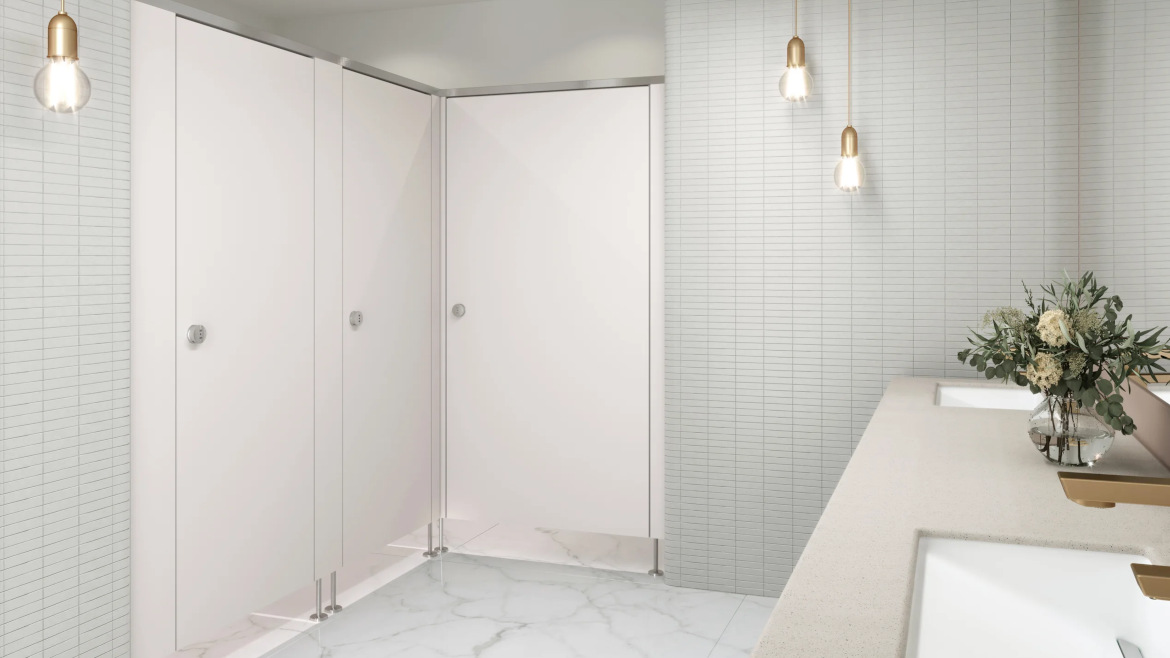When I’m on the road for work, I hate using public restrooms. You never know what state you will find them in, unfortunately. And I always head to the back, choosing a stall away from other people. Apparently, I’m not alone in these feelings, according to Bradley Corp.’s annual Healthy Handwashing Survey.
In January 2024, Bradley queried 1,003 American adults about their handwashing habits, concerns about seasonal viruses and their use of public restrooms. Participants were from around the country and were fairly evenly split between women and men. In addition to handwashing habits, the survey delved into the state of public restrooms this year. The results found that while a public restroom is by definition “public,” a majority of U.S. adults want more privacy when they’re using the facilities.
According to the 2024 Healthy Handwashing Survey, 70% of Americans feel public restroom stalls lack sufficient “coverage.” Specifically, 58% would like the gaps around stall doors and walls eliminated.
“In fact, survey respondents back up their thoughts with actions and preferences. Case in point, 40% choose the stall that’s furthest from the entrance and 35% are annoyed when someone selects the stall next to theirs, even though others are available,” the survey reports.
Additionally, 45% of survey respondents say they’d appreciate stall doors that extend all the way to the floor. However, having full-length doors would stymy the 74% of respondents who have used the gap under the door to determine if someone is already in the stall. To remedy the awkward under door look-see, 96% believe it would be helpful if there were visual indicators on stall doors to show if it is occupied.
Restroom partitions between water closets and urinals has not been addressed in the plumbing codes until recently. Both the International Plumbing Code (IPC) and Uniform Plumbing Code (UPC) require privacy partitions for water closets and urinals; however, according to Julius Ballanco, P.E., former PM Engineer columnist, the UPC has more advanced requirements in its 2024 code. This past October, IAPMO published IAPMO/ANSI/CAN Z124.10, Water Closets and Urinal Partitions, as American National Standards (ANS) and National Standards of Canada (NSC).
“The IAPMO/ANSI/CAN Z124.10 standard covers urinal and water closet partitions and specifies requirements for materials, construction, performance testing and markings. This standard fills a gap in the industry that has existed for many years. IAPMO/ANSI/CAN Z124.10 brings a comprehensive approach in addressing the essential requirements for materials, strength and durability, and design specification to properly address partitions for water closets and urinals. With the expanded use of all-gender toilet facilities, the IAPMO Z124.10 is an extremely important new standard for specifying the level of privacy and security for the users of water closets.”

Ballanco has proposed a code change to the IPC during this code cycle to improve privacy requirements for partitions, including the reference to IAPMO Z124.10. You can view the entire Code Council's first report of proposals for modifications to the Group A Codes online.
“The reason it has taken so long for the plumbing codes to address the detailed requirements for privacy is because of a lack of understanding of paruresis, also known as shy bladder, and parcopresis, also known as shy bowel,” Ballanco says. “People suffering from either one or both of these conditions require proper privacy to use public facilities. It wasn’t until we started to allow all-gender toilet rooms that partition privacy came to the forefront. With all-gender toilet rooms everyone seems to recognize that privacy partitions were needed, not only for paruresis and parcopresis but for security as well. This resulted in the development of IAPMO Z124.10 standard which I was pleased to Chair. The standard clearly defines the level of privacy required for water closet and urinal partitions.”
Privacy is a fundamental aspect of restroom design that significantly impacts user experience and satisfaction in commercial settings. Design engineers play a crucial role in creating restroom environments that prioritize privacy while maintaining functionality, accessibility and inclusivity. By incorporating thoughtful design elements and adhering to privacy standards, engineers can contribute to the creation of comfortable, welcoming, and inclusive restroom spaces for all users.
Just something to keep in mind for your future designs.



